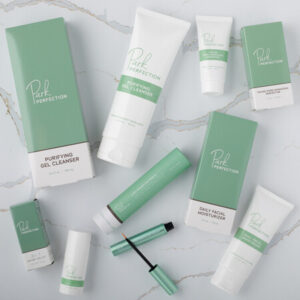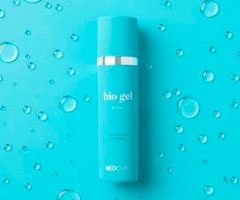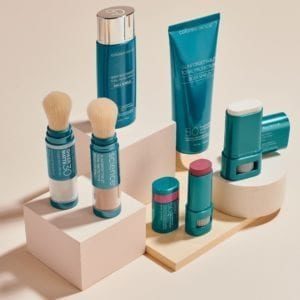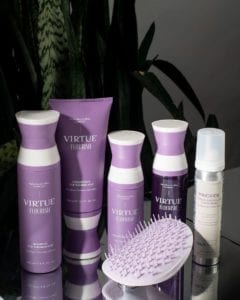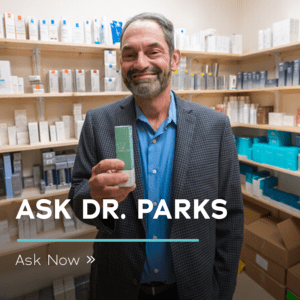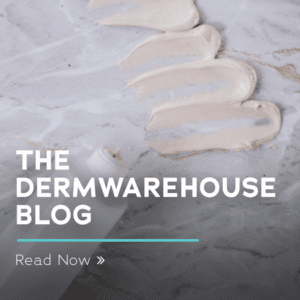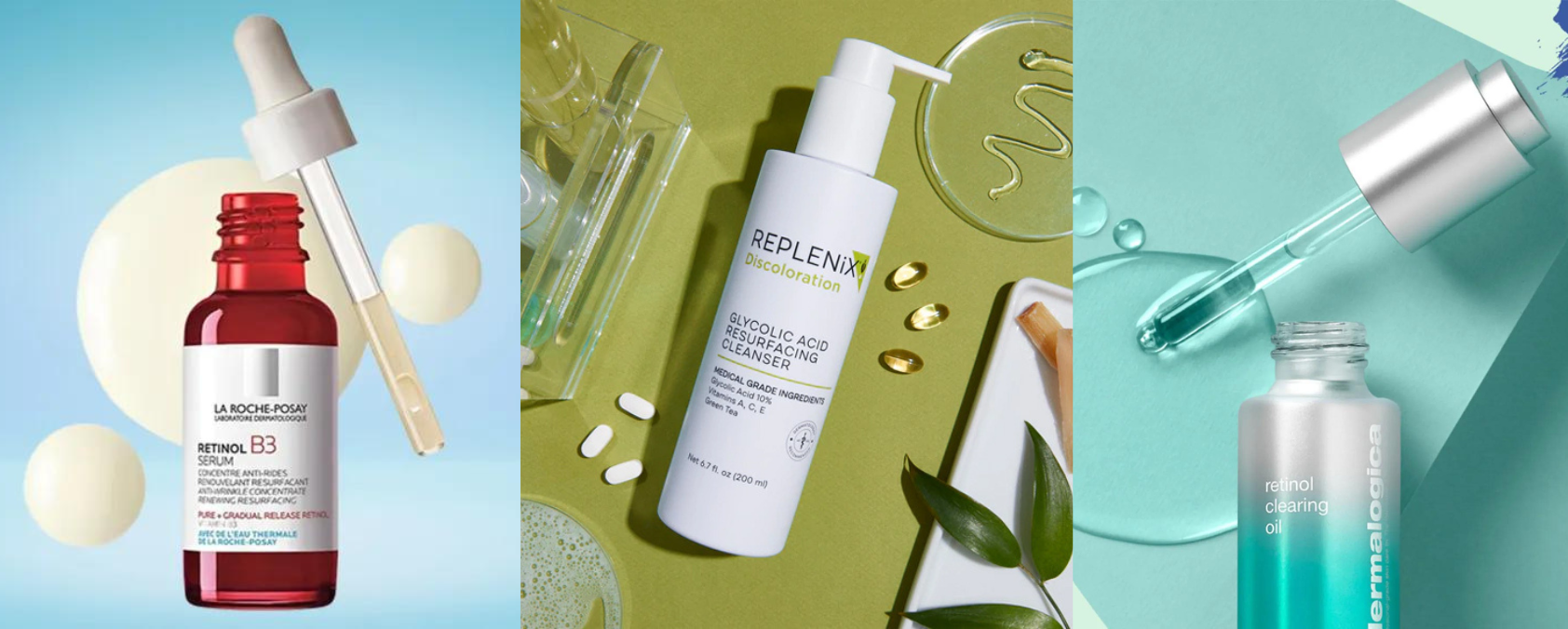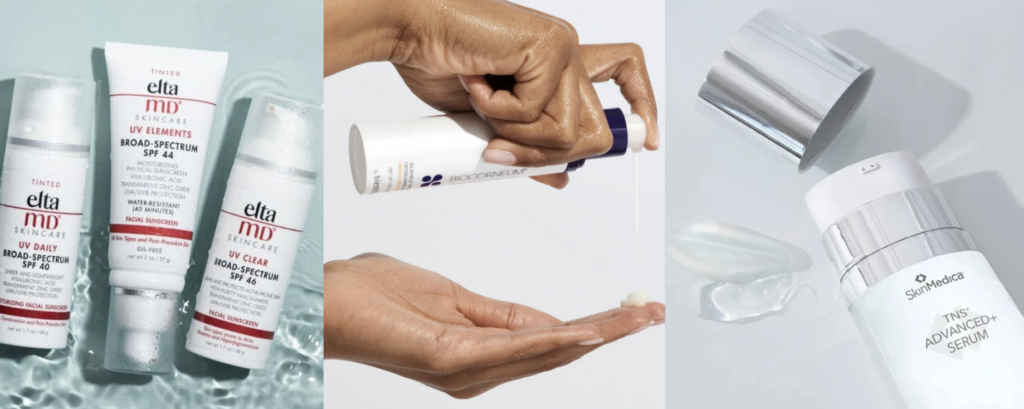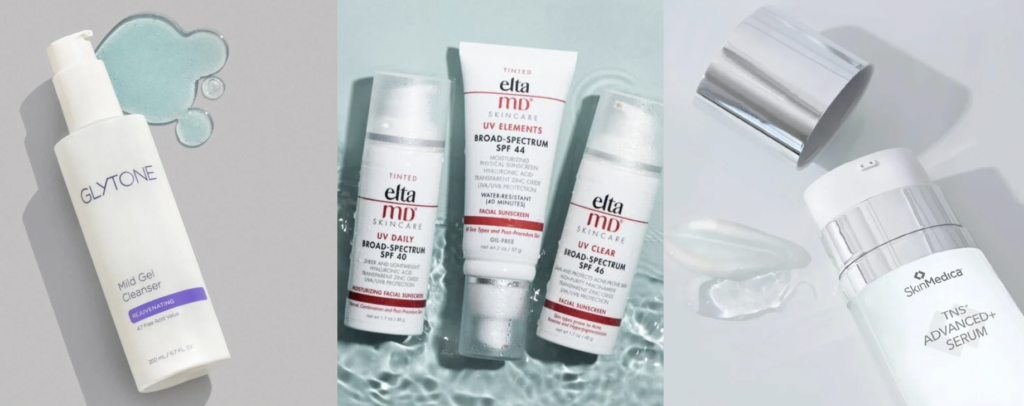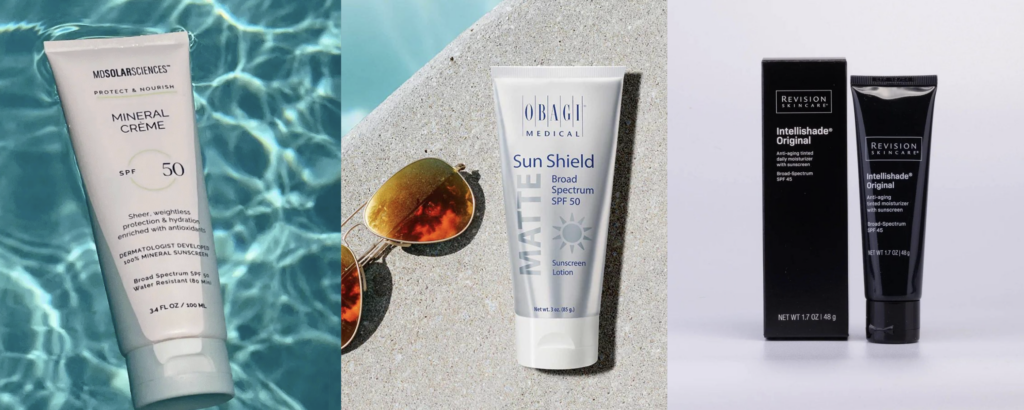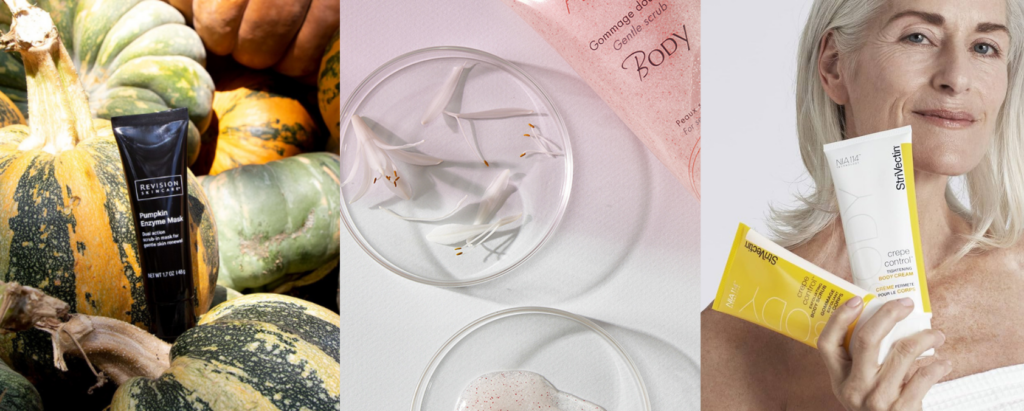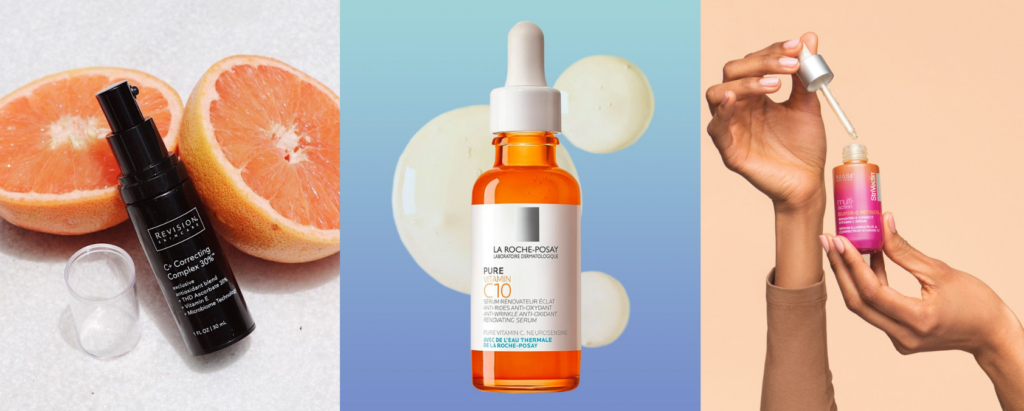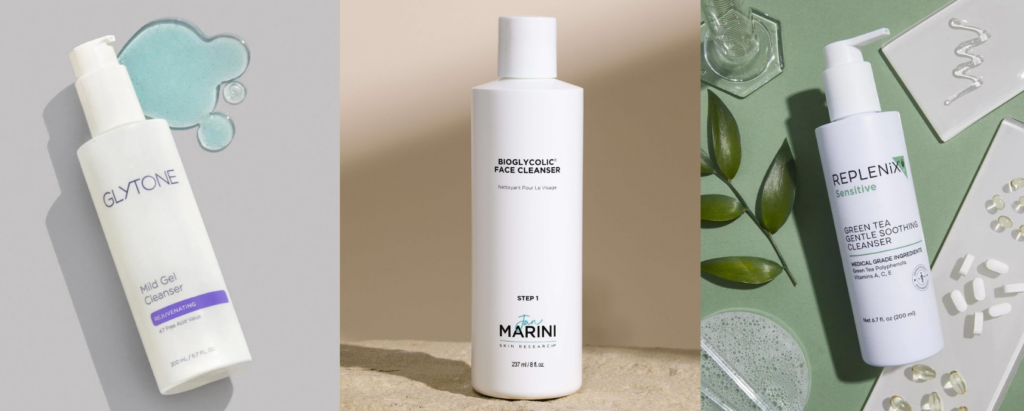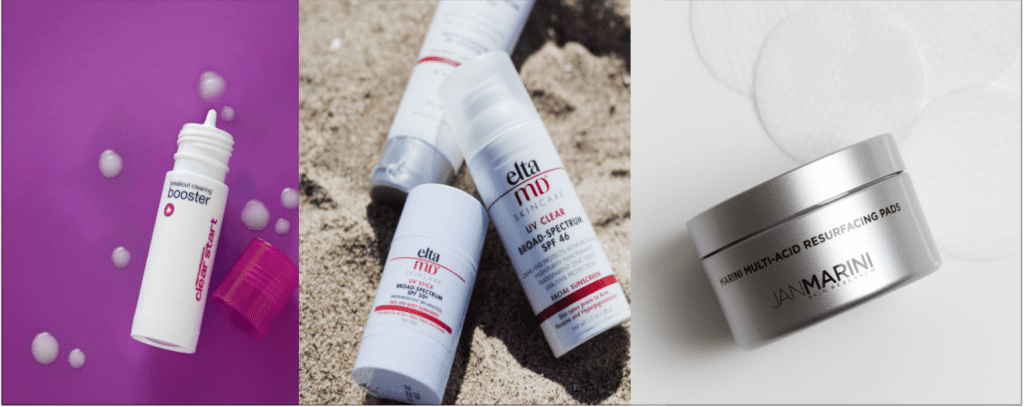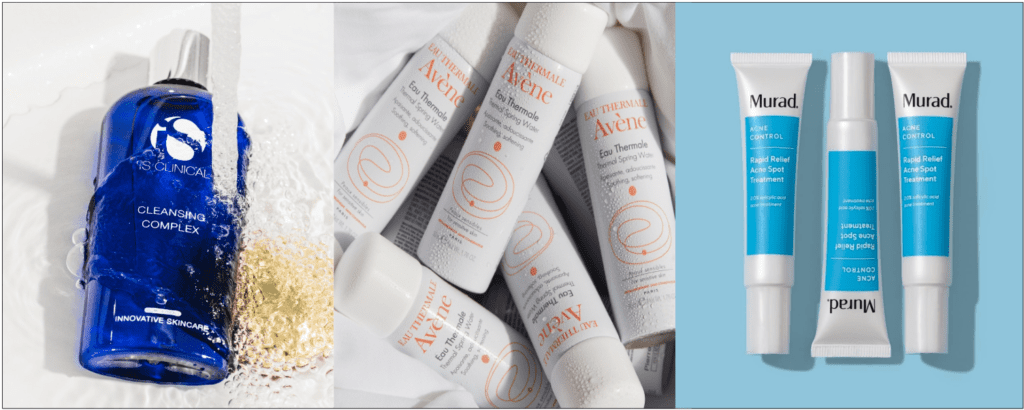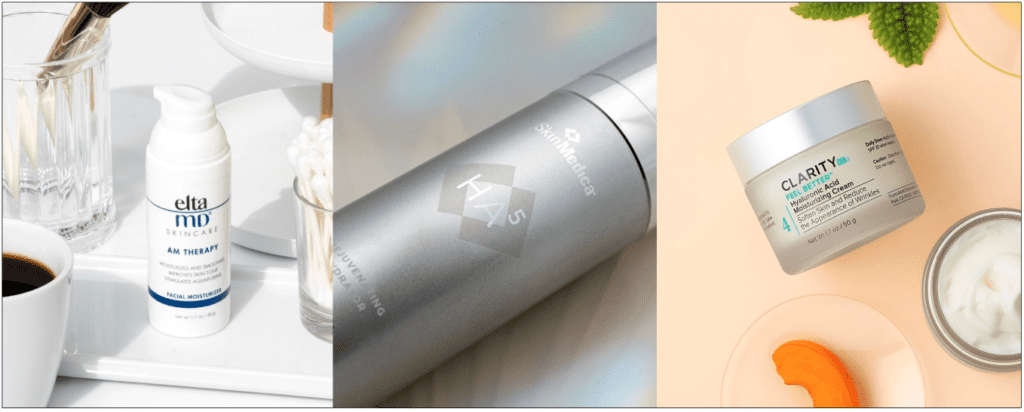Anyone from beauty bloggers to celebrities to dermatoligists will tell you that you need a retinol in your skincare routine to achieve a youthful glow, but there are lots of ingredients out there that can gently exfoliate the skin to remove dead skin cells and visibily improve the signs of aging. Retinol and Glycolic Acid are two of our favorite ingredients for any anti-aging routine.
“Both Retinol and Glycolic Acid work to gently remove dead skin cells and increase cell turnover, but the ways that they do so are a bit different,” says Dr. Parks of the two ingredients. “For this reason I often recommend that my patients use products with both ingredients as part of their skincare routine in order to achieve optimal anti-aging results,” he says. “However, the combination of the two might cause irritation on some skin types. With these two ingredients, it helps to understand your skin type and how to mitigate the side effects that come from over-exfoliation,” Dr. Parks adds.
So how do Retinol and Glycolic Acid work?
Both Retinol and Glycolic Acid are powerful active ingredients that work to slough off dead skin cells by gently exfoliating. Throughout this process, the removal of dead skin cells promotes the regeneration of new ones, which works to smooth over fine lines and wrinkles, address hyperpigmentation, and leave skin looking youthful and radiant.
“When it comes to exfoliating, Retinol and Glycolic Acid are the best ingredients you can get,” says Dr. Parks. You want to be careful when using physical exfoliants on your face, such as scrubs and loofahs, because the harshness of these products can end up causing micro-tears in the skin. “The skin on your face is very delicate, so physical exfoliants that work well on the body can end up causing adverse effects on the face,” Dr. Parks says. “This is why you want to turn to chemical exfoliants, such as Vitamin A or Alpha-hydroxy Acids. They can gently remove dead skin cells without causing micro-tears,” he says.
Retinol
Retinol, a form of Vitamin A, works to deeply penetrate the skin to promote skin cell turnover and regeneration. This powerful anti-aging ingredient can also help treat acne-prone skin or scarring caused by acne, and is often found in acne treatment products like the Dermalogica Retinol Clearing Oil.
As an anti-aging ingredient, Retinol is one of the most popular active ingredients that has been proven to help smooth over fine lines and wrinkles in clinical studies. The Dermalogica Dynamic Skin Retinol Serum is a popular choice that has shown clinical results at reducing the 4 main signs of aging in just 2 weeks: wrinkles, enlarged pores, dark spots, and uneven texture on the skin.
“I like to recommend products with Retinol in them for those looking to address aging concerns such as fine lines and wrinkles because Retinol penetrates deeper within the skin than Glycolic Acid,” says Dr. Parks. “This deeper penetration helps to boost natural collagen production in the skin, leaving you with a smoother, more radiant complexion,” Dr. Parks says. The La Roche-Posay Retinol Serum is a popular choice for those skin smoothing effects.
Retinol can also repair sun damage and other discoloration or texture. The StriVectin Advanced Retinol Nightly Multi-Correct Serum is clinically proven to smooth over skin, address hyperpigmentation caused by sun damage, and diminish the appearance of fine lines and wrinkles. “Sun damage can age the skin by enhancing the appearance of fine lines and wrinkles and by causing discoloration over time,” says Dr. Parks. “For discoloration, I recommend the Senté Even Tone Retinol Serum,” he says.
Glycolic Acid
Glycolic Acid is an Alpha-Hydroxy Acid (AHA) extracted from sugar cane. “This active ingredient works to gently remove dead skin cells by loosening the bond that they have on the surface of the skin,” says Dr. Parks. “When used regularly, AHAs can leave the skin looking radiant and smooth by removing any rough patches of skin and encouraging skin cell turnover,” he says.
Because Glycolic Acid works to refresh the surface layers of the skin, its a popular active ingredient in many skincare products that are created to address acne concerns. The Replenix Glycolic Acid Resurfacing Cleanser and the Dermalogica Daily Glycolic Cleanser are both great options for a Glycolic Acid product that will address acne concerns. The Jan Marini Multi-Acid Corrective Pads are also great for spot treatments or for treating breakouts on a specific part of the face.
“Glycolic Acid is great for acne-prone skin because it can help prevent breakouts,” says Dr. Parks. “Regular exfoliation keeps dirt, oil, and dead skin cells from blocking the pores, and when combined with the right moisturizing products it can even help balance oil production,” he says. The Murad Retinol Youth Renewal Night Cream is a great product that will address breakouts while rehydrating the skin.
Pair it with the Elta MD PM Restore Moisturizer to balance oil production and prevent your skin from becoming even more oily later on. “Acne-prone or oily skin types will find that their oil production actually increases when they use active ingredients that can strip the skin of its natural oils,” says Dr. Parks. “I always recommend a strong moisturizing routine for oily skin types because that will help balance their oil production by adding back in any moisture that was lost,” he says.
Can I use Retinol and Glycolic Acid together?
Using these two powerhouse ingredients together is a great option if you’re looking to get the most out of an anti-aging routine, but there are some things you should know before you start combining active ingredients. “These are two active ingredients that can dry out the skin, so for any patients with dry or sensitive skin, I always recommend starting with one or the other to see how your skin will respond before adding a second active ingredient to your routine,” says Dr. Parks. “This also goes for other actives like Vitamin C, which can further irritate the skin when combined with ingredients like Retinol or Glycolic Acid at the same time,” he says. The Murad Vita-C Glycolic Brigtening Serum is a great choice for an exfoliating product that also has the brightening effects of Vitamin C.
If you do find that your skin has trouble with active ingredients, you can still combine them in your routine—you may just need to space out how often you use the ingredients, and never use them together. “What you can do is incorporate a Retinol into your skincare routine a couple of times per week, and then use a Glycolic Acid a few times per week on days that you don’t use the Retinol,” says Dr. Parks. Your skincare routine doesn’t have to look exactly the same each day, so you can always mix products every couple of days to get the most out of your skincare. This will make it last longer, too.
Sun Sensitivity
Finally, before you add a Retinol or Glycolic Acid to your skincare routine, you should know that exfoliating your skin can make it more vulnerable to sun damage. “If you’re exfoliating regularly, you should be diligent about using an SPF regularly,” says Dr. Parks. “This is especially true for patients using prescription acne medications that contain Retinoids, but I do find that patients can have increased sensitivity to the sun with the regular use of any exfoliating ingredient,” he says.
The best way to prevent this vulnerability to sun damage is to pair your routine with a strong SPF, and to reapply your SPF throughout the day as directed. The Elta MD UV Daily Broad Spectrum SPF is a great choice for a daily sunscreen that will enhance your skin’s overall appearance. “I don’t recommend exfoliating more than three times per week,” says Dr. Parks. “Most patients will see results from using an exfoliating product just a couple of times per week, or even just once per week if they have sensitive skin,” he says.

